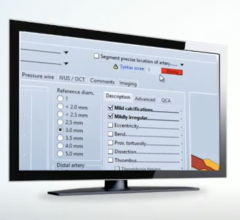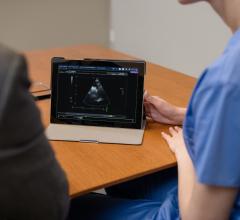
For any cardiology department looking to upgrade or replace its cardiovascular information system (CVIS), the main questions that should be asked are related to integration and interoperability. These are key to leveraging health information technology (IT) investments to achieve improved efficiency, help cut costs and accommodate increased patient volume.
Enterprise-wide imaging and IT systems are the new focus of healthcare. This entails a movement away from disconnected departmental silos of data and images that traditionally have not been able to interoperate toward an integrated system based around a central core where all departments now share data into a unified electronic medical record (EMR). This is usually based on employment of a cloud or vendor-neutral archive (VNA) to house all the hospital and health system’s data in a central archive and uses a content management system to filter and keep track of the data.
This centralized storage architecture does not mean clinical specialty and departmental IT systems are no longer needed. CVIS that enable unification of all cardiology department data reporting in one place will play a big role. These specialized systems offer clinically detailed reporting for the cath lab, hemodynamic data, ECG, cardiac imaging, echo reporting and electrophysiology that generic cardiac modules offered by EMR vendors cannot provide.
However, department solutions do need to fully integrate with the IT infrastructure at the enterprise level to enable the smooth flow of data (regardless if it is text, images, video or waveforms) between the EMR and clinicians throughout the enterprise, not just those logged into the CVIS. These systems should help simplify enterprise-wide access to cardiology department data through a single interface and eliminate the need for numerous subsystem connections. This will eliminate the need to re-enter patient data, and save time by eliminating searches in various IT systems or physical locations for pieces of information.
In selecting a new system, focus should be on systems that offer structured reporting solutions. Structured templates and choosing dropdown menu terminology will help streamline searches, data mining, dashboarding functions and sending data to clinical registries. Structured reporting also enables better quality assurance tracking.
The guidelines from the various cardiology specialty societies also need to be integrated into structured reporting to ensure clinicians are following guidelines and appropriate use criteria (AUC). This will become increasingly important in the coming years as payers such as Medicare begin to require documentation that AUC is followed in clinical decision-making for full reimbursement. The vendor you choose needs to be able to incorporate these guidelines and make regular updates to system templates as guidelines change and new clinical procedures are introduced (i.e. transcatheter aortic and mitral valve repairs and replacement procedures). As healthcare reform’s IT operational requirements for Stage 3 Meaningful Use go into effect in the coming years, the vendor you choose also needs to be able to update their systems to meet these new mandates.
New technology investments should eliminate the need for separate workstations to access disparate silos of data, including cath reporting systems, various cardiac imaging picture archiving and communication systems (PACS) and reporting systems for different modalities. New CVIS should integrate the cardiology department’s entire workflow into a single system.
An ideal CVIS should be standards-based, vendor-neutral, use structured reporting and enable the following functionality using a single computer:
- A CVIS should serve as a comprehensive cardiology PACS to enable image review and sharing capabilities for all cardiovascular imaging modalities on a single workstation;
- It should have reporting capabilities for all sections of the cardiology department, so all patient data is accessible in one place;
- A CVIS should enable access to the ECG management system and possibly allow segments of waveforms to be incorporated into reports;
- For cath lab reporting, the system should be fully integrated with the hemodynamics system; and
- The CVIS also should serve as the department’s image and report archive.
Watch the video "What to Look for in a New Cardiovascular Information System." Sentara Health in Virginia is going through the process of choosing a new cardiovascular information system (CVIS) and implementing enterprise imaging. Sentara's IT leader shares information on what elements they are looking for and how they plan to wire their system to achieve a new level of interoperability for cardiology. They were at RSNA 2014 visiting with CVIS vendors as part of their selection process.
As society increasingly transitions to Web-based, mobile computing using tablets and smartphones, cardiology departments need to consider mobile device access to the CVIS. Physicians can leverage this mobile accessibility to become more efficient and improve care. This may include using a tablet to access reports, labs and imaging while on rounds, to enable better patient communication/engagement, to complete reports in between procedures, or even making a determination from home if the cath lab should be activated at 3 a.m.
Ideally, the system also should meet Meaningful Use criteria for sharing data and images with the hospital’s EMR and referring physicians outside the cardiology department or the hospital. Future Meaningful Use requirements should be considered, including expanding two-way access to patient data and images to enable patient engagement. Future Meaningful Use needs also require integration of computerized physician order entry (CPOE) systems for prescriptions and orders that combine clinical decision support (CDS) software. CDS software will need to document that AUC has been met for specific tests, imaging exams and procedures. Another component to consider is the use of radiation monitoring software to record the approximate doses patients receive from cardiac computed tomography (CT) and diagnostic and interventional angiography. Dose recording software is already required in two states and it is expected others will follow.
However, to enable the types of integration outlined above, the key element is the system’s interoperability between disparate vendors’ equipment, devices and third-party software. Some vendors may integrate better than others, especially with the most recently introduced CVIS platforms. Most of the major CVIS have created more vendor-neutral software, allowing greater accessibility. Even large medical device vendors, which in the past each had their own proprietary CVIS software that did not interface easily with other vendors’ systems, have recently launched Web-based CVIS that enable much better interoperability.
Despite this, it is always good to trust but verify all interoperability claims and make sure any vendor chosen is held accountable to the department’s specific needs in the final contract language. Outline exactly what your department needs in the request for proposal (RFP) so all integration issues can be discussed before a system is installed.
Watch the video "What to Look for in CVIS and PACS Workflow Efficiency." This includes examples of technologies on the market and a discussion of what to look for in PACS and CVIS workflow efficiencies with Ascendian Healthcare Consultant Jef Williams. DAIC Editor Dave Fornell takes viewers on a tour of key workflow improvements offered by health IT vendors at HIMSS 2016.
Link to GE Healthcare's Interactive, Digital Guide for Centricity Cardio Enterprise


 June 27, 2022
June 27, 2022 








